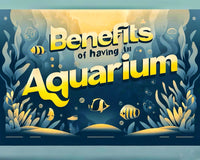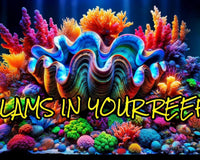Back to Basics - Explaining Salinity in Your Saltwater Reef Aquarium
Salinity = Salt Concentration
Maintaining an optimal reef tank is a nuanced art that demands attention to numerous details, with one of the most crucial being the salinity of your water. Salinity, the salt concentration within your aquarium, is a pivotal factor that influences the overall health and stability of your reef ecosystem. This guide aims to delve into the essence of salinity, its pivotal role, and the methods to maintain it at ideal levels for a flourishing reef tank.
Understanding Salinity
Salinity is expressed in parts per thousand (ppt) or specific gravity (SG), where the optimal range for most reef tanks is 35 to 38 ppt or an SG of 1.025 to 1.028. This range mirrors the natural seawater environment, promoting a balanced ecosystem for coral and marine life. Salinity directly impacts marine organisms’ osmoregulation processes, affecting their hydration, nutrient absorption, and overall health.
The Critical Role of Maintaining Correct Salinity
• Health of Marine Life: Proper salinity levels are crucial for the internal balance of marine organisms, pivotal for their survival and health.
• Coral Growth: Corals are sensitive to salinity changes. Stable salinity is essential for calcium uptake, a key factor in skeletal growth.
• Disease Prevention: Stable salinity levels help prevent stress in marine life, reducing their susceptibility to diseases.
Measuring Salinity
1. Refractometer: A preferred tool for its accuracy, it measures the refraction of light in the water. Calibration is crucial for accurate measurements.
2. Hydrometer: A cost-effective option, though it’s less accurate and can be influenced by air bubbles.
3. Digital Salinity Pen: Offers quick and accurate measurements with the ease of digital technology. It’s essential to ensure the device is calibrated and maintained for accuracy.
Maintaining Salinity Levels
Regular Testing
Regular testing is essential. Check your tank’s salinity at least weekly, or more frequently when adjusting salinity levels or after water changes.
Understanding Evaporation
It’s critical to understand that while water evaporates, the salt does not. This leads to an increase in salinity over time if not properly managed.
Top Off with RO/DI Water
To combat evaporation’s effect on salinity, top off your tank with RO/DI water. This replenishes the evaporated water without increasing salinity.
Making Adjustments
To lower salinity, add RO/DI water cautiously. To increase salinity, gradually add a higher salinity saltwater mix to your tank.
Consistent Water Changes
Conduct regular water changes with saltwater mixed to the correct salinity to help stabilise your tank’s salinity.
Select Quality Salt Mix
The salt mix quality can affect your tank’s salinity stability. Choose a reputable brand and follow mixing instructions to reach the desired salinity.
Troubleshooting Common Issues
• Avoid Rapid Changes: Gradual adjustments are key to preventing stress and shock to your marine life.• Ensure Accurate Readings: Regular calibration and maintenance of your measurement tools are necessary for precise salinity readings.
• Monitor Evaporation: Be vigilant about the rate of evaporation, especially in warmer climates, and adjust your top-off routine accordingly.












